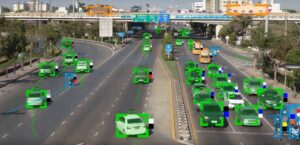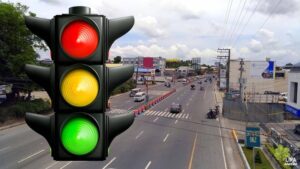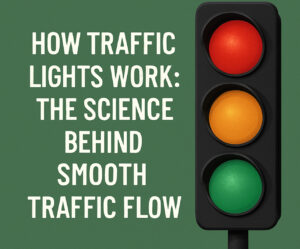The evolution of road safety gear has seen significant innovations over the last decade, but one of the most practical advancements is the development of collapsible traffic cones. Compact, lightweight, and highly visible, these cones have become an essential tool for modern traffic management. Whether you’re using 28 traffic cones for school zones, 36 traffic cones on highways, or specialized white traffic cones for construction sites, the collapsible version offers a new level of convenience and efficiency. Know more..
Why Traditional Cones Are No Longer Enough
Traditional cones are bulky and heavy, making transportation and storage a constant challenge. When cities, construction crews, or event organizers require hundreds of cones, the logistics can be overwhelming. That’s where collapsible traffic cones come in—they reduce storage needs by up to 80% and are light enough to be carried in standard vehicle trunks.
South Africa, for instance, is seeing increasing adoption of collapsible cones in urban and semi-urban zones where quick deployment is key. Emergency responders and traffic officers benefit from tools that are both efficient and easy to manage.
Advantages of Collapsible Traffic Cones
- Space-Saving Design Collapsible cones fold down into a flat shape, which makes storing 28 traffic cones in a car boot or small cabinet entirely feasible.
- Lightweight Material Usually made from nylon or high-grade polyester with rubber bases, they are easy to transport without sacrificing durability.
- Quick Deployment In high-pressure situations like car accidents or emergency roadblocks, responders can deploy dozens of 36 traffic cones in a matter of minutes.
- Versatility White traffic cones are increasingly used for non-standard applications—events, VIP routes, or even guiding pedestrian flow. Collapsible versions allow quick shifts in layout as needed.
- LED Integration Many collapsible models now feature built-in LED lights for visibility in low-light or night-time conditions, enhancing safety.
Use Cases in the Real World
1. Emergency Services
South African paramedics and police units often keep collapsible cones in their vehicles. Being able to pull out 28 traffic cones and have them up in minutes helps in securing accident scenes swiftly.
2. Construction Crews
Roadwork sites often change rapidly, especially with urban development in Johannesburg and Cape Town. 36 traffic cones in collapsible form help crews set up and take down safety zones without wasting valuable time.
3. Public Events
Marathons, parades, and public gatherings use white traffic cones to guide attendees or section off areas. Collapsible cones mean less transport cost and quicker event setup.
4. Rural Safety Programs
In rural regions of Limpopo and Mpumalanga, collapsible cones are being used for community-led safety initiatives. Villagers set up temporary road safety barriers using 28 traffic cones to slow down traffic during peak pedestrian hours near schools and clinics.
How to Choose the Right Cone
When selecting collapsible cones, consider the following:
- Height: Choose between 28 traffic cones or 36 traffic cones depending on visibility needs.
- Color: White traffic cones are often preferred for pedestrian zones or special instructions.
- Base Stability: A rubber base ensures the cone won’t topple easily in wind or from vehicle gusts.
- LED Feature: Opt for LED-lit cones for night operations or low-visibility conditions.
- Durability: In harsh environments, choose cones with weather-resistant materials.
Maintenance and Storage Tips
- Clean Regularly Dust and dirt reduce reflectivity. Wipe cones down with mild soap and water.
- Avoid Overstacking Overcompression can damage the spring mechanism. Store collapsible 28 traffic cones in a rack or box that limits vertical weight.
- Battery Check If using LED versions, check and replace batteries as needed, especially before planned use.
- Inspect Before Use Always test the pop-up function before deploying. A malfunctioning cone can compromise safety.
- Store in Cool, Dry Places Excessive heat or moisture can degrade the fabric or electronics. Proper storage extends cone life.
Environmental and Cost Considerations
While collapsible cones may have a higher upfront cost than standard ones, their longevity and ease of use often justify the investment. Plus, using fewer vehicles and less space for transport translates into reduced fuel costs and carbon emissions.
In rural areas of Africa, where transportation logistics are challenging, collapsible cones help reduce the number of trips needed for setup. 36 traffic cones can now fit in a pickup where only a dozen standard ones could before.
Reusable, foldable cones also cut down on single-use plastic waste. In the long term, their carbon footprint is significantly smaller, making them an environmentally conscious choice for sustainable road safety programs.
The Future: Smart Collapsible Cones?
As smart city infrastructure develops, collapsible cones could be integrated with sensors and GPS. This would allow tracking cone locations, issuing alerts when cones are misplaced or stolen, and even using cones to transmit traffic flow data.
Pairing white traffic cones with LED lights and QR codes could also allow on-the-ground workers to scan and update traffic plans in real time. This could revolutionize how quickly city planning teams adapt to evolving on-road conditions.
Imagine cones equipped with real-time data transmission capabilities that alert central systems to their deployment status, or even cones that blink in patterns to communicate specific instructions to autonomous vehicles.
Industry Insights and Trends
The market for collapsible cones is expected to grow substantially over the next five years, particularly in emerging economies. Demand is being driven by:
- Urbanization in Africa and Asia
- Increased construction of roads and smart infrastructure
- Rising use of temporary work zones and events
South African suppliers are beginning to offer bundled kits with 28 traffic cones and 36 traffic cones in various colors, including white traffic cones, to meet growing demand from municipalities and businesses.
Companies are also investing in more rugged materials and weatherproof LED lights to meet the specific challenges of the African climate—from coastal salt air to dry inland heat.
Final Thoughts
Collapsible traffic cones aren’t just a gimmick—they’re a modern response to evolving road safety needs. Whether you’re dealing with 28 traffic cones for a school zone, 36 traffic cones on a busy street, or white traffic cones for a festival crowd, collapsible models make it easier, faster, and smarter to manage space and safety. Their rise in regions like South Africa is a testament to their practicality. As infrastructure continues to advance, these cones may just become the new standard for mobile, efficient traffic control.
They solve real-world problems—limited space, high costs, poor accessibility—and do so in a way that’s adaptable and forward-thinking. With continued innovation and thoughtful integration into larger transport ecosystems, collapsible cones are shaping the future of road safety, one pop-up at a time.





